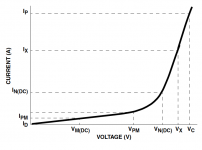PetesGuide
Member
- Location
- Foster City, CA, USA; NEC 2014
I'm looking to specify a surge suppressor to support extending an indoor 25-volt PA system to outdoor speakers, and I reached a point of confusion that I think will increase my understanding (and hopefully that of others) of the relevant bonding and code issues.
I have found a surge suppressor that is suitable for the type of speaker system we have (constant voltage), but it lists only the 70.7 and 100 volt variants of this type of system. I called the vendor, and asked if it also supported 25-volt systems, and the tech on the phone was knowledgeable enough on the topic that he pointed me to their 8-ohm surge protector.
The surge suppressor in question is the L-Com AL-D2-PAW: https://www.l-com.com/surge-protect...lt-public-address-systems-lightning-protector
So my questions are:
I have found a surge suppressor that is suitable for the type of speaker system we have (constant voltage), but it lists only the 70.7 and 100 volt variants of this type of system. I called the vendor, and asked if it also supported 25-volt systems, and the tech on the phone was knowledgeable enough on the topic that he pointed me to their 8-ohm surge protector.
The surge suppressor in question is the L-Com AL-D2-PAW: https://www.l-com.com/surge-protect...lt-public-address-systems-lightning-protector
So my questions are:
- What elements of the design might make this suitable only for the higher-voltage 70.7 and 100 volt systems, and not the 25-volt systems?
- Is this just an omission of labeling, and it will work just fine?
- Given the label, I presume that even if it would work electrically (and I really want to know the EE side of this), it still can't be used because of the omission of the lower voltage systems, right?
- Surely this is a common type of installation, but I don't see any lightning arrestors that list support for 25-volt PA systems--what am I missing? (I see DEHN has some that might be suitable, but they seem to focus on European markets, so this doesn't seem like an option.)


